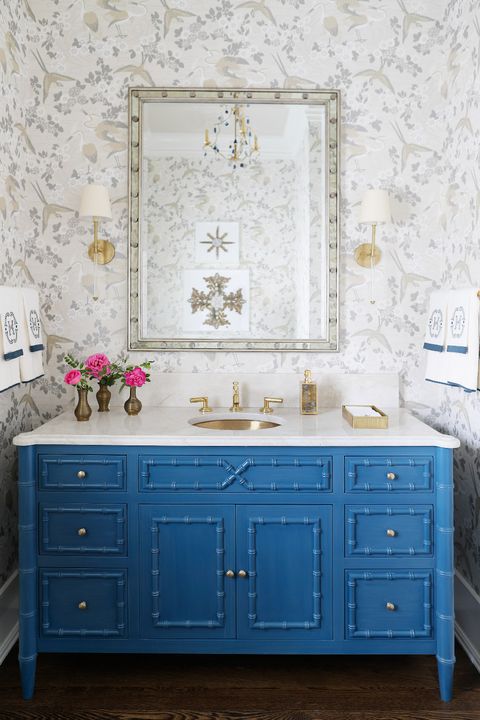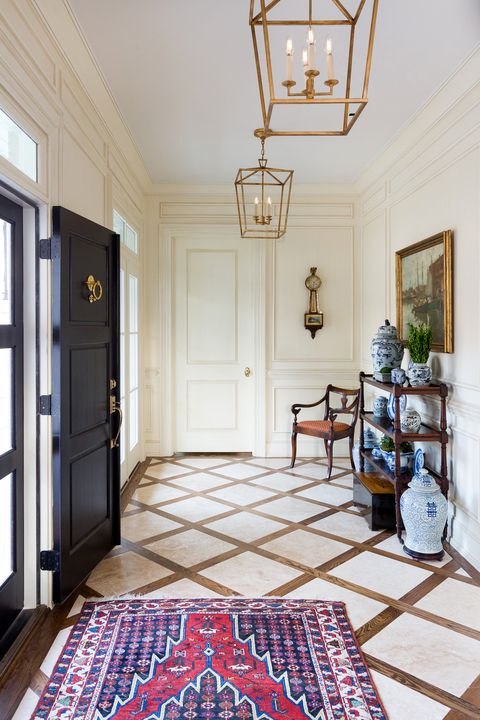What You Can Learn About Balancing Your Renovation Budget from a Professional Designer
MA Allen explains how to keep your finances in check.
So, you’ve decided to renovate—yay! Chances are, you’re extremely excited for a new home that works for you, not to mention fresh finishes, up-to-date fixtures, and personal touches. Chances are you’re less than excited about the toll it’s all going to take on your bank account. And that’s normal. Because let’s face it: Renovating is expensive. Just a kitchen renovation can run as high as $100,000, so whether you’re planning to redo a single room or the whole kit and caboodle, it’s going to require some serious investment.
The good news is, with the proper planning, preparation, and knowledge, you can ensure you’re getting the most out of your money—and prevent things from going over-budget. We chatted with Raleigh designer MA Allen, who not only has completed plenty of ground-up renovations for clients, but also happens to be in the middle of renovating her own family’s dream home. Suffice it to say, she understands the struggle. Read on for the planning tips and tricks she recommends for a balanced budget—and a happy renovation.

Start early
MA says that the worst examples she sees of clients being unprepared financially are when they start too late. A renovation is a big project and, like any big project, requires a lot of planning and coordination of moving parts (just ask any contractor!). The earlier you start planning, the sooner you can start laying out your plan, allowing ample time for it all to come together.
For example, seemingly little things like tile selection could cause major delays if they’re not finalized until late in the process. “If a client all of a sudden decides they want those really cool concrete tiles you’re seeing, those are way thicker than normal tile, so we have to kind of establish early on,” Allen says, in order to ensure the area is the right depth for inlay. So bottom line: start planning as much of the scheme as you can as soon as you decide to undertake a reno.
“You can end up spending good money later on if everything isn’t kind of well planned in advance,” says MA. “No matter how small the piece of the puzzle is, it all feeds into the big picture and the quality of work. So by making all the selections up front, then you have plenty of time to be able to make substitutions and kind of swivel around selection so that you are hitting on budget.”
Determine your wants and needs
Just as every homeowner has a different style, every homeowner has a unique way of living in their home. So when determining your budget, you want to be sure you’re envisioning the ways you use your space (not the way it will look on Pinterest), down to the most mundane details.
“Sometimes we’ll as a client, ‘What do you want in your kitchen?’ And they’ll say, ‘Oh, just plug me in for all the standard stuff,” MA says. “And then we go to their house for a walk-through, and they might have like six drawers of tea, or just something specific like that. And we need to plan for that.”
“It’s just, you know, taking the time up front to study how you live, your habits, how your family operates, what you do when you walk in the door.” And if you start early enough, you’ll have time for that.

A wallpapered MA Allen bathroom.STACEY VAN BERKEL
Create project “buckets”
While looking at your entire budget may seem completely overwhelming, it becomes much easier once you break it down a bit. “I’ll have a bucket of money for plumbing, a bucket for tile, a bucket for hardwood flooring, a bucket for countertop, interior trim, fireplace mantel, you know, kind of like each category,” MA explains. “Then as we start the process, we we kind of have a baseline.” This makes it easier both to account for spending in a certain area and to move spending around between areas should you decide to.
Estimate big
If you’re on the fence about wanting something or going for a bigger size, MA suggests erring on the overestimating side. “I always tell the client that it’s easier to scale down than to have money leftover and scale a few things up,” she explains. “I’d rather start with everything. So if in the master shower, say, the ideal dream is to have a steam shower, rain and body sprays, and a handheld on a slide bar. And then once we get all the numbers back to the builder, if we are way out of range, then we can lose the steam shower or whatever it is.”
Be prepared to compromise
Unless you have an unlimited budget, chances are you’re going to have to compromise on some things. This is where the buckets come in. “Say we have a certain amount for plumbing and we put in a $4,000 kitchen sink, and a $2,000 kitchen faucet, sometimes I can save by saying ‘okay, but we have a $100 allowance for the laundry room, and I think we can peel that back because you all are not as concerned with that as you are with the master bath.'”
Look at all your options, but weigh them individually
This brings us to another point: weighing your options fairly. “I always make the point that if people are looking at two options side by side they can say, ‘oh, the one on the left looks so much better than the one on the right. And it’s so much more expensive.’ But if I took the one on the left away, would you ever look at the one on the right and not like it? A lot of times the answer is no.”

An entryway by MA Allen.ANNA ROUTH
See where you can (semi) DIY
When you’re working with a builder or contractor, it’s worth looking into how they might be able to achieve a certain look for you at a lower price. “There are many tile companies that make these gorgeous patterned tiles,” MA says by way of example. “But if we buy natural marble tiles and cut it on site, we can recreate our own pattern and do something completely unique for a fraction of the cost.”
Know where you can cut corners…
So, you have your budget mostly together but you’re still coming up over. Where’s a safe place to scrimp? As MA sees it, you should look less to what items you can get cheaply and more to what areas of the house are less heavily used. “In my own personal remodel for a beach house, I ended up getting an Ikea vanity for a guest bathroom,” the designer says. “I think if it were in a heavy use area, I’d be a little bit concerned about it holding up, but because it was in a low use area, that was a great substitution, and allowed me to spend more on my cabinetry budget.”
And where you can’t
Which brings us to the opposite question: Where should you never cut corners? The answer: on the permanent stuff. “You can always wait and do wallpaper later” (when the money is less tight), MA says, “but you’re never going to go back in and redo the interior trim.” Same goes for custom cabinets, a certain splurge that, with the proper planning, will be well worth the price for the quality and the function specific to how you live. “Those are two items that I definitely think always are worth it,” says Allen.

About the author